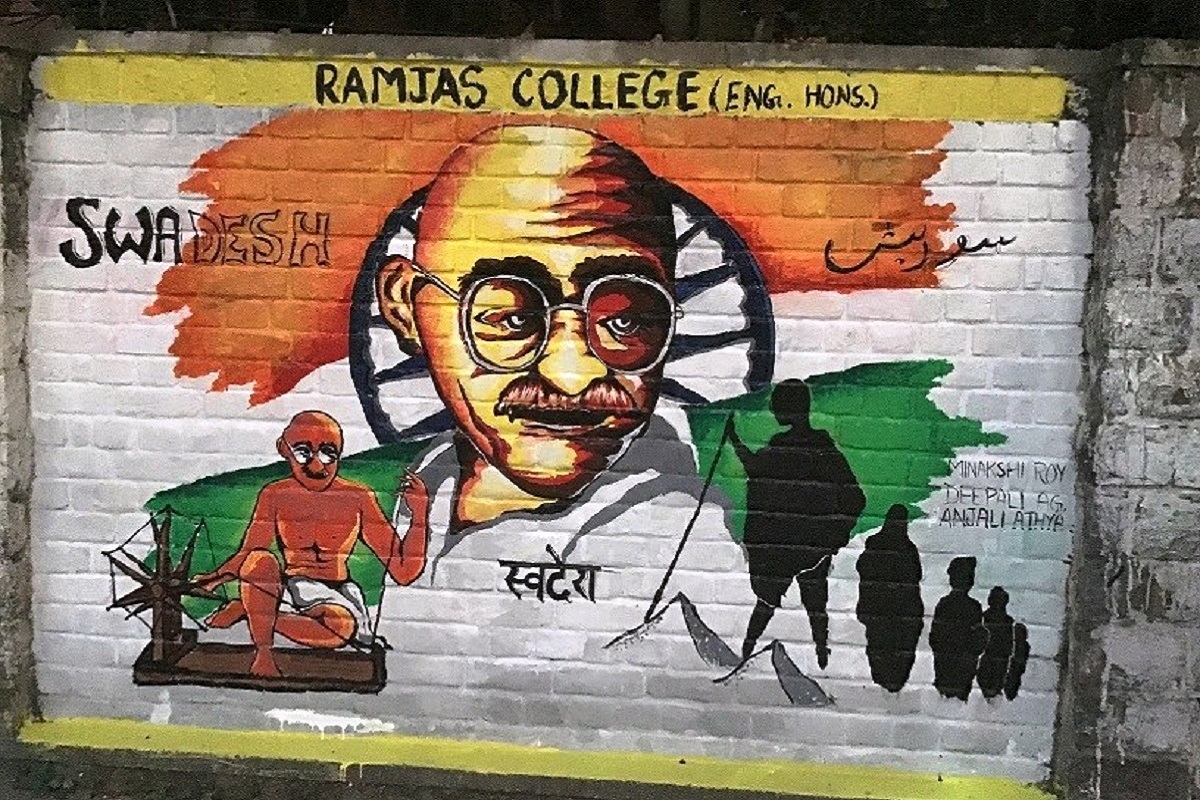DU postpones DUSU poll result to November 25 from 21
The dates for counting of votes for colleges and departments have alose been revised. It take place on Sunday (November 24), instead of November 21, it added.
Significantly, the percentage stipulated by the DU for the cut-offs for the unreserved General as well as the EWS candidates is virtually the same in most of the colleges.

In Ramjas College the cut-offs in BA English (Hons) for General and EWS categories are 97 per cent and 96.5 per cent respectively. (Image: Facebook/@ UniversityofDelhi)
Like other educational institutions, the Delhi University (DU) is also introducing 10 per cent reservation for students from the Economically Weaker Sections (EWS) of the general category in its colleges in the wake of the enactment of constitutional amendment legislation in this regard earlier this year.
In the first cut-off list it announced on 27 June for admission to various undergraduate (UG) courses for the academic session 2019-20, the DU has also released cut-offs for the applicants from the EWS and other reserved categories.
Significantly, the percentage stipulated by the DU for the cut-offs for the unreserved General as well as the EWS candidates is virtually the same in most of the colleges. This was attributed by the DU officials to the point that this is the first year of the implementation of the EWS quota about which the varsity and its colleges would need to know more from practical observation and experience.
Advertisement
Commenting on the matter, Deputy Dean of Students’ Welfare, DU, Hena Singh said, “Since this is the first cut-off list for admission, the motive behind is to remain safe and also to gain some ideas about the applicants’ preferences of the colleges. Things will become much clear after the second cut-off list is out.” She pointed out that the difference in the first cut-off for General and EWS candidates in most DU colleges was barely one per cent.
In colleges like the Institute of Home Economics (IHE) and the Kalindi College, the first cut-off for the students of both these categories is the same. The colleges have also increased their students’ strength following the introduction of the EWS quota after being directed by the Union Ministry of Human Resource Development.
The DU has added about 6000 seats to its existing 57,000 students, which has taken its total strength to nearly 63,000.
In colleges like Ramjas and Gargi, the first cut-off for the General and the EWS category applicants shows a difference of maximum one per cent in all the subjects.
In Ramjas College, for instance, the cut-offs in BA English (Hons) for General and EWS categories are 97 per cent and 96.5 per cent respectively. Ramjas College principal Manoj Khanna said, “The conditions stipulated for the General and the EWS categories are the same. It is also the first time the university has added the EWS category. As we had no idea about how to go about setting the EWS cut-off for the first time, we have kept the EWS cut-off this way as a precautionary measure….Maybe after the first cut-off admission intake, we get an overall idea and we can accordingly set the next cut-off later.”
Criticising the idea of high cut-off for EWS students, a member of DU’s Executive Council Rajesh Jha said, “It makes the whole purpose of EWS reservation meaningless and shows the scant regard of the university administration towards the constitutional provision for social justice.”
A section of students seeking to apply under the EWS category was disappointed with the “high cut-offs” for them.
A student, Manash Sood, who applied under the EWS category, seemed to be upset about the cut-off being the same for General and EWS applicants. “While applying for courses in DU under this category I was hoping to see a difference of at least 4-5 per cent in the EWS cut-off from the general category. With 91 per cent, I do not think I will be able to make it to Political Science even in the fifth cut-off….Otherwise I am planning to opt for BA (Hons) History or may be a BA Programme,” said Manash.
Advertisement